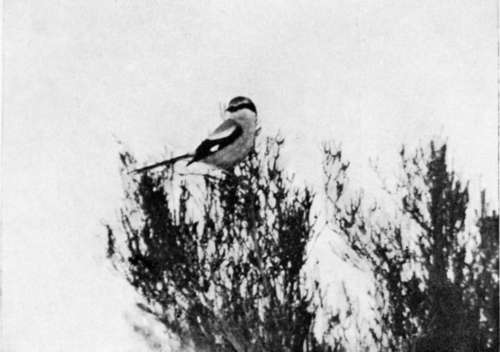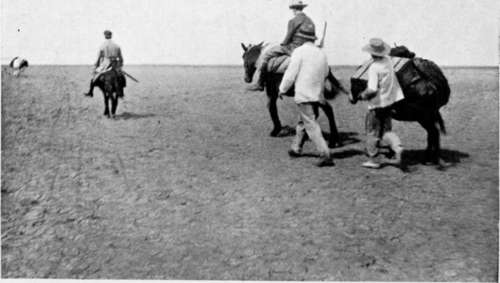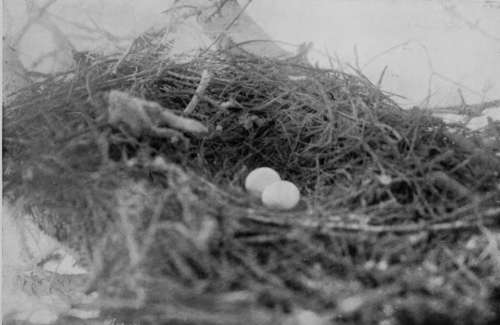Birds'-Nesting In Spain. Part 9
Description
This section is from the book "Bird-Hunting Through Wild Europe", by R. B. Lodge. Also available from Amazon: Bird-Hunting Through Wild Europe.
Birds'-Nesting In Spain. Part 9
There was one egg in the nest, which I took as we were going away, leaving a hen's egg in its place, for I expected she still had another egg to lay. However, on our return this hen's egg had gone, probably some hungry charcoal-burner or herdsman had eaten it. These men take all the Kites' and Eagles' eggs they can find, for eating purposes, as well as any others they come across.
A boy told me he had recently eaten a clutch of Polluelas' eggs. This is the name they give to all the small Crakes. The Little Crake, Spotted Crake, and Baillon's Crake are all called 1 Polluela.' On my previous visit I saw one of our men carry home a basketful of the eggs of Little Egrets and Buff-backed Herons for eating. I have myself partaken of omelets composed of Whiskered Terns' eggs.
For the expedition across the dried-up marismas we had three donkeys and a mule to convey our effects, for we were going to put up at a rude ckoza, or hut, belonging to one of the keepers, and it was necessary to take our bedding with us, as well as our food. This ckoza was entirely composed of pine-branches thatched with reeds : in the centre was the living-room, and at each end were small sleeping-rooms. In one of these our mattresses and bedding were spread on the earth floor.
Now I don't mind sleeping on the floor at all, and can make myself comfortable almost anywhere, but I must say I do not like to share rooms with hens, pigeons, and pigs. Whenever I came in there were always hens scratching about on our beds, and some pigeons roosted on the rafters over our heads, with results that are easier imagined than described; several times I turned out a huge, gaunt-looking sow, which apparently considered that it had as much right there as myself. I thought differently about this, however, and had to enforce my ideas with a thick stick before she gave in and cleared out with a grunt.

Southern Grey Shrike (Lanius Meridionalis)

Crossing The Dried-Up Marisma
But old Vasquez and his wife and two daughters did their best to make us comfortable, and notwithstanding these trifling drawbacks we had a very good time and enjoyed our stay in the wilds.
We found several more Kites, Black Kites, Ravens, and Booted Eagles, also two nests of Marsh Harrier, but the Waders and Herons, as I mentioned before, were non-existent. The drought had one unexpected effect, for it brought nearer to human habitation the famous wild camels which inhabit this region, the mention of which by Mr. Abel Chapman caused such a controversy in the Field some years ago. They are the descendants of a small herd imported many years ago from the Canary Islands, and being unsuitable for the work for which they were intended, were turned out or allowed to escape. Since then they have lived in the marismas in an entirely feral state, seldom seen by any human eye save that of an occasional herdsman or guarda, in the far distance. On several occasions we saw two at a distance of about 1,000 yards. From the difference in size they were apparently an old camel and a young one about half-grown.
The Red Deer, of which there were great numbers, were also frequently to be seen close to the few and scattered huts. For this is one of the most famous and best-stocked sporting preserves in all Spain, both for big game, such as deer and boar, etc., and for ducks, geese, partridges, woodcocks, and snipe.
The sand-dunes, which cover an immense extent of country, and which are ever encroaching on the forests, and filling up the numerous lakes and lagoons with fine particles blown about by the wind, are a curious feature of this district. As these dunes advance one sees the pine-trees in all stages of being engulfed. Here is one buried but a foot or two, vigorous as ever ; there are trees the whole of whose trunks are completely covered with the advancing sand ; while higher up, bleached and lifeless branches, like the gaunt skeletons of extinct monsters, testify to the buried forests beneath. These sand-dunes are inhabited by rabbits, Stone Curlews, and Red-necked Nightjars, while the tamarisks and cistus bushes provide shelter for the Red Deer, and the mane has, or jungles, harbour many a Wild Boar. Over the dazzling surface dart the great green Eyed Lizards, some of them nearly three feet long, and snakes up to six feet; while overhead are Kites and Eagles incessantly on the watch, ready to devour either snake, lizard, or rabbit. A Kite we shot was packed full of pieces of a freshly-swallowed Eyed Lizard, while a Booted Eagle, in the uniform dark brown plumage, had evidently dined last on a rabbit. There are two distinct phases of plumage in this Eagle, which may perhaps account for the confusion which formerly prevailed, viz. a light form with white breast, and a dark form ; and, as in most raptorial birds, there is considerable variation in size. It is quite the smallest of the Eagles, being hardly larger than the Buzzard, and its eggs are, if anything, rather smaller than the Buzzard's. Two eggs are usually laid ; but in one nest-again in a large silver poplar-we found three young birds.

Nest Of Booted Eagle (Aquila Pennata)
In another nest quite low down in a half-buried, spreading pine-tree at the edge of a sand-dune, were two eggs and the hind quarters of a rabbit. While I was engaged in photographing this nest, and was in the act of lashing the camera legs to the bough, the female Eagle dashed in and sat on the same bough, almost within reach of my hand, then, realizing my presence, she flew off with a scream. The tree was very heavily foliaged, and in consequence it was very dark, and it is possible that she had not seen me, her attention being taken up with the others below me on the ground.
Continue to:
